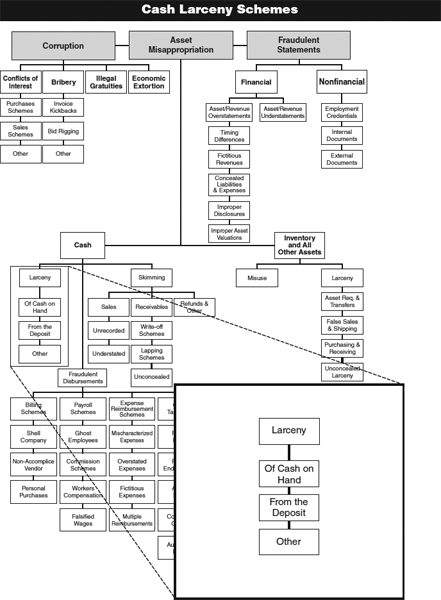
EXHIBIT 3-1
CHAPTER 3
CASH LARCENY
LEARNING OBJECTIVES
After studying this chapter, you should be able to:
| 3-1 | Define cash larceny |
| 3-2 | Understand how cash receipts schemes differ from fraudulent disbursements |
| 3-3 | Recognize the difference between cash larceny and skimming |
| 3-4 | Understand the relative frequency and cost of cash larceny schemes as opposed to other forms of cash misappropriations |
| 3-5 | Identify weaknesses in internal controls as inducing factors to cash larceny schemes |
| 3-6 | Understand how cash larceny is committed at the point of sale |
| 3-7 | Discuss measures that can be used to prevent and detect cash larceny at the point of sale |
| 3-8 | Understand and identify various methods used by fraudsters to conceal cash larceny of receivables |
| 3-9 | Understand schemes involving cash larceny from deposits, including lapping and deposits in transit |
| 3-10 | Understand controls and procedures that can be used to prevent and detect cash larceny from bank deposits |
| 3-11 | Be familiar with proactive audit tests that can be used to detect cash larceny schemes |
CASE STUDY: BANK TELLER GETS NABBED FOR THEFT1
Laura Grove worked at Rocky Mountain Bank in Nashville, Tennessee, for five years. As a teller, she thought to herself, she wasn't getting any richer. She and her husband owed about $14,000 in credit card bills, which seemed to get higher and higher each month, especially ...
Get Principles of Fraud Examination, 4th Edition now with the O’Reilly learning platform.
O’Reilly members experience books, live events, courses curated by job role, and more from O’Reilly and nearly 200 top publishers.

